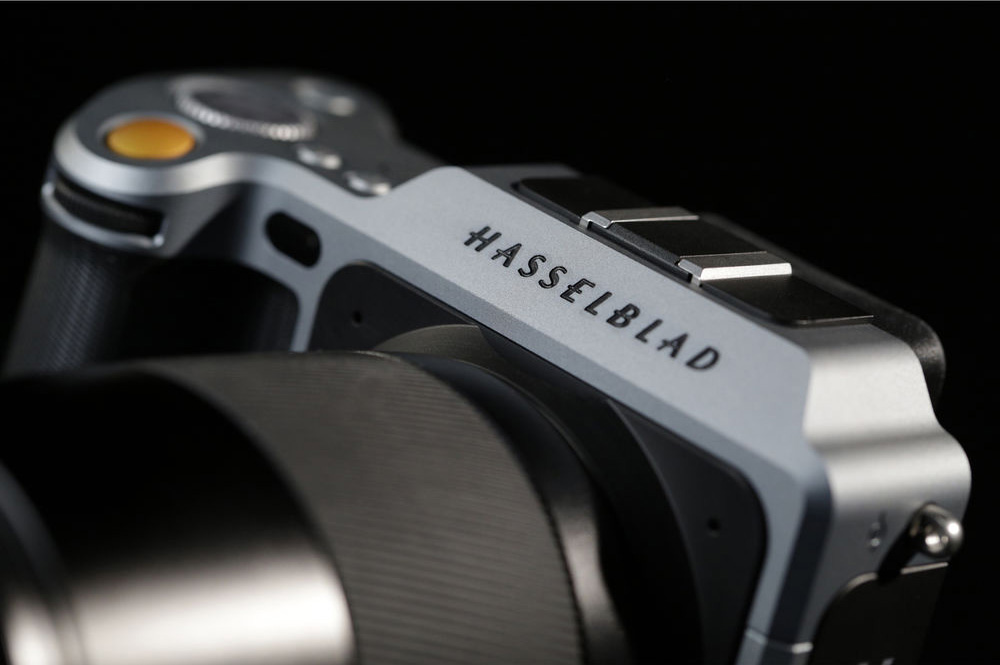
The Hasselblad X1D-50c. Medium Format Mirrorless and maybe the most awesome release of 2016!
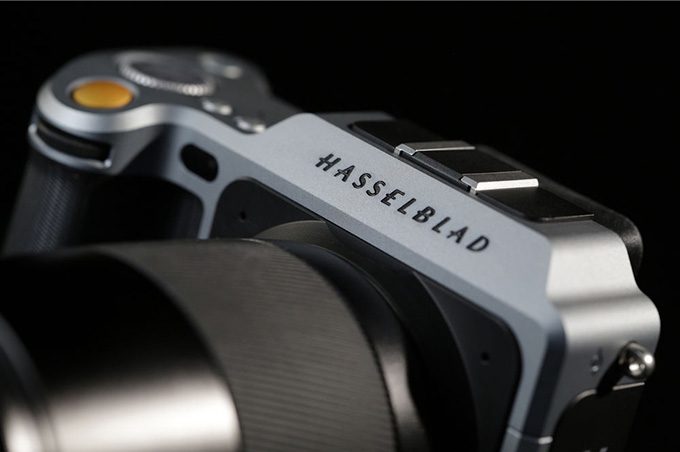
Wow!!! While I was ready to write off Hasselblad forever due to their huge blunders over the past couple of years (Their Sony copies at an insane cost…Lunar anyone?) here they come with something that looks so amazing, I am ALREADY drooling at my screen looking at the images of this sleek, mirrorless, MEDIUM FORMAT camera, the new Hasselblad X1D-50C! I was always a fan of MF, but not of the size and heft. THIS changes everything, and I can see it inspiring MANY to push their craft and art just due to the mobility of it all.
Usually these cameras are HUGE, BULKY, and come out for most with a hefty tripod. Usually its slow going. This new X1D-50c is slim, sleek, and appears to be something that will be a cinch to handhold. I mean, look at the top down view. Looks SO good to me! The grip appears to be perfect and the build appears to be solid as can be.
So Hasselblad has come out with a camera that delivers true medium format quality in your hand. ISO up to 25k, 50MP, made in Sweden, and well, just wow.
Trust me, I will be reviewing this bad boy as soon as I can get my hands on it. Starts shipping July 29th!
You can see more on it here or pre order it at B&H PHOTO! Price? $8995.
Determined to shake up the photographic industry, Hasselblad has unleashed a world’s first in the form of the X1D-50c Medium Format Mirrorless Digital Camera. This camera takes the well-regarded 50MP 43.8 x 32.9mm CMOS sensor found in numerous medium format systems and incorporates it into a revolutionary mirrorless camera body. Designed and handmade in Sweden, this camera is a precision tool with exceptional ergonomics and a compact size that even rivals smaller format systems. Taking this system above and beyond the rest is a large sensor that works hand-in-hand with the Hasselblad Natural Color Solution to create phenomenal raw images with smooth tonal gradations thanks to 16-bit color depth and 14 stops of dynamic range.
Image quality is superb, and Hasselblad’s electronic system is capable of capturing clean images within a sensitivity range of ISO 100-25600, while also being able to capture photos at a rate of up to 2.3 fps. Moving a bit beyond pure image quality, the X1D embraces the Hasselblad Central Lens Shutter, enabling shutter speeds as long as 60 minutes or as short as 1/2000 second, with flash sync possible at every speed. Additionally, to make the camera more versatile, Full HD 1080p video at 25 fps using H.264 compression is possible.
Moving into operational details, the X1D embraces mirrorless design by incorporating a 2.36MP XGA electronic viewfinder that permits natural, eye-level monitoring with the added advantage of overlays and programmable information in direct sight. One such feature would be the ability to shoot in various aspects with a view that compensates for such changes, including square or the classic XPan panoramic format. Alongside this EVF is a 3.0″ 920k-dot touchscreen LCD on the rear that permits intuitive operation of all of the camera’s features and settings.
For more physical and tactile use, the X1D offers front and rear dials as well as a mode dial which can be locked into a recessed position to prevent accidental changes when it is in your bag. There are also dual SD card slots for backup, organization, or just having extra storage. Bringing the system into the modern age is built-in Wi-Fi and GPS, allowing for remote connection and file transfer as well as instant geotagging of your files. Additionally, it has Mini HDMI, audio input and output, and a super-fast USB 3.0 Type C connection.
Hasselblad X System
Introducing mirrorless medium format, Hasselblad’s X system takes the outstanding quality of a larger sensor and manages to create a compact, yet uncompromising camera that will deliver almost unparalleled image quality. It is designed and made in Sweden and draws inspiration from the company’s legendary V system. Also, making use of the mirrorless design and a central lens shutter, system noise is kept to a minimum for shooting without disturbing your subject.
50MP CMOS Sensor
Revolving around a large 50MP CMOS sensor, measuring 43.8 x 32.9mm, the X1D-50c is capable of capturing an extremely wide dynamic range of up to 14 stops along with vivid 16-bit color depth. When combined with the Hasselblad Natural Color Solution, tonal transitions and skin tones show immense depth, detail, and clarity for lifelike image quality, even in dark shadow and bright highlight regions. To suit working in a variety of lighting conditions, a sensitivity range of ISO 100-25600 is available, and still files are saved in the Hasselblad 3FR raw file format.
Hasselblad Natural Color Solution
Working with the spectacular image quality of the 50MP CMOS sensor, the Hasselblad Natural Color Solution is designed to deliver images with the most natural color without needing to delve into a variety of presets. This system is also capable of creating imagery with exceptionally smooth tonal transitions that are reminiscent of analog film capture, which is thanks in part to the X1D’s 16-bit color depth.
Hasselblad Central Lens Shutter
Able to accelerate to open and close exceptionally quickly and reliably while also using minimal power, the central lens shutter mechanism offers numerous advantages for photographers. Namely, flash sync is possible at all shutter speeds up to 1/2000 second. The shutter is also in a ready state at all times for near instant response and it causes virtually no vibration at longer exposures. Additionally, it is durable and rated to beyond 1,000,000 exposures.
Full HD Video Recording
In addition to high-resolution stills shooting, the X1D can also record Full HD 1080p video at 25 fps. Video can be saved in the H.264 compressed format for greater editing flexibility with a variety of software options. For further video recording capabilities, the X1D offers 3.5mm audio input and output jacks as well as a Mini HDMI port for monitoring.
System Design and Connectivity
Built-in 3.0″ 920k-dot touchscreen LCD affords intuitive control over settings navigation and adjustment, and also permits bright, clear live view monitoring.
Integrated 2.36MP XGA electronic viewfinder permits natural eye-level viewing as well as the ability to display overlays and additional information clearly and effectively during shooting. It also displays the capture area when set to shoot 39MP square format or XPan panoramic images.
USB 3.0 Type-C connector offers transfer speeds of up to 5 Gbps for quick and responsive tethered live view and stills capture.
In addition to tethered shooting, dual SD memory card slots are incorporated into the side for flexible storage capabilities. Multiple options are available for maximum flexibility, including the ability to save all images to one card and automatically switch to the other when it is full as well as save RAW images to card 1 and JPEG to card 2.
Benefitting video applications, a Mini HDMI port permits use of an optional external monitor for clear monitoring. Additionally, 3.5mm audio in and out ports are provided for more flexible control over audio recording during video.
Built-in Wi-Fi enables working with an iOS mobile device and the Phocus Mobile app for remote camera control, wireless image previews, and file browsing.
GPS allows shooters to automatically have geolocation embedded in the image files for tracking where you took some of your best shots.
Optimized for use with XCD series of lenses which offer an integrated central shutter system capable of sync speeds up to 1/2000 sec.
Optional adapter provides compatibility with the updated range of HC and HCD lenses, which feature an improved leaf shutter unit for increased shutter and flash sync speeds of up to 1/2000 sec.
Weather and dust sealing ensures this system can stand up to all environmental conditions professionals find themselves in.
Phocus 3.1 is a free image processing software that complements the X1D’s capabilities, and enables raw file processing for both stills and video, as well as a range of editing capabilities, including automatic moiré detection and the ability to work with adjustment layers for applying exposure, white balance, and color corrections.

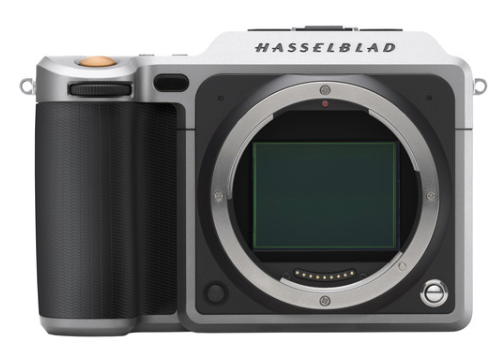
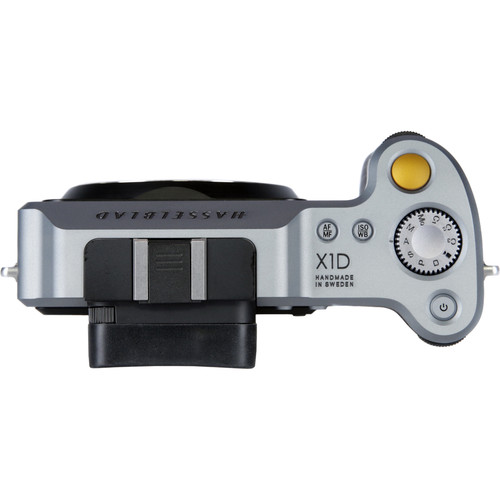
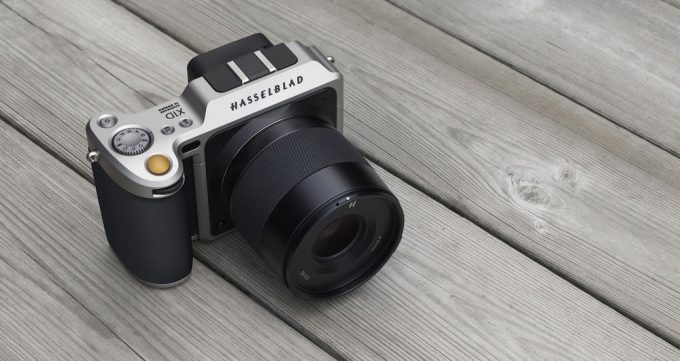
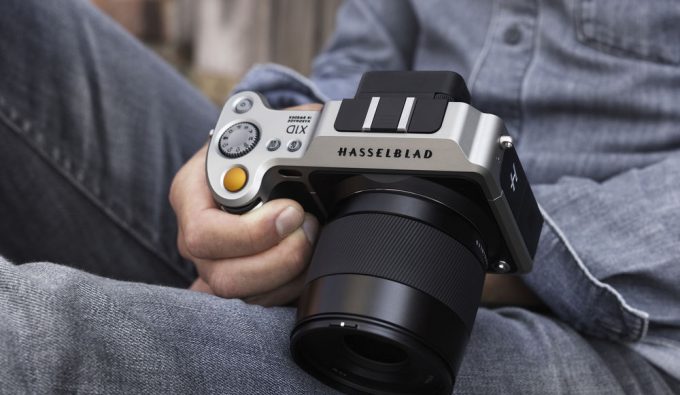
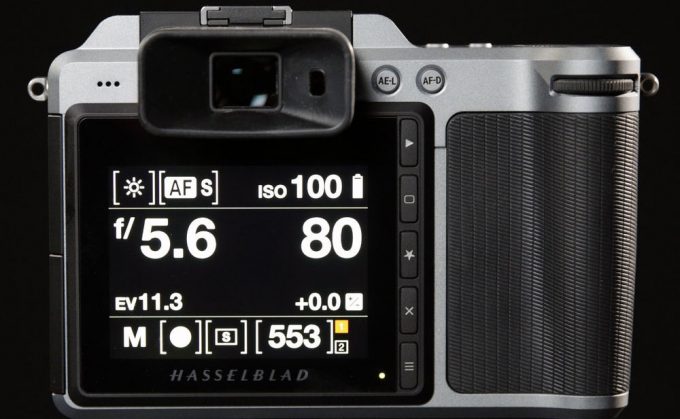
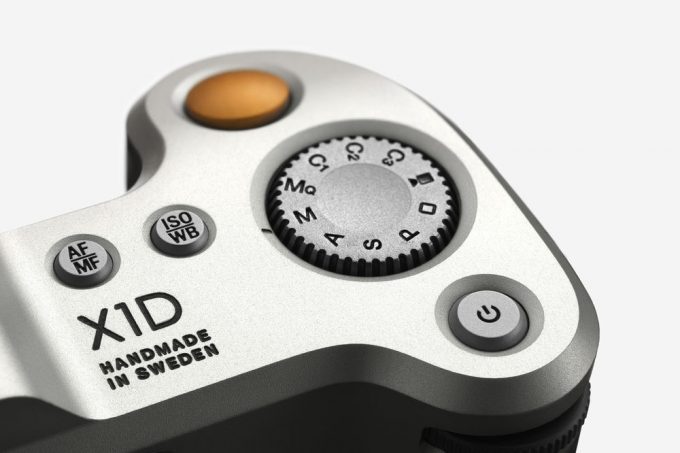

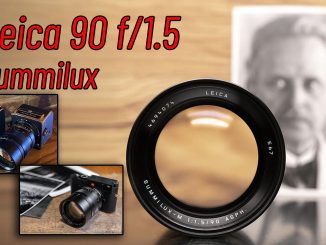

Thanks for your advice on the Hasseblad xd. Your comment is the first one that give me a true observation of the camera and the downside of what it is cable of doing. CONTACT ME AT IMAGERYNC@GMAIL .COM.
If you are interested in topic: how to earn online by teaching i – you
should read about Bucksflooder first
Ming Thein is Hasselblad ambassador, he does not hide it. Unlike many reviewers who get paid for positive reviews.
What exactly you do not believe in those two phrases? That he can handhold the H6? Well, Annie Leibovitz can handhold an H camera, so why Ming can’t do it?
Or you don’t believe that camera without mirror slap will produce less shake when fired?
I’m unfortunately left out of this atmospheric level. Then again I have always strived to get my hands on a “Hassy” even after photo school in the 70’s. These things were relegated to astronauts even then and things haven’t changed. If you have to ask the price then…
How many AF points? Only the central one?
Thanks for the preview, Steve. I went to Foto Care in NYC on Monday and got some hands on time with the camera. I even wrote up a little hands on preview myself. (See fstoplopez com) In terms of the camera body itself, it’s great! Lightweight, compact and the grip is very comfortable. I can see myself carrying it around all day.
But there were three major problems: It heats up REALLY badly when taking video, the write times are horrible and the time between when you press the shutter button and the actual picture is taken is way off. Now, these problems could be due to it being a prototype camera only and the write time could be the SD card’s fault, but if these issues aren’t addressed in the final build, I can see this being a huge issue with a lot of people. Especially given the price tag.
Um, not quite! The announced 45mm equates to a 35mm in 135 format. The hinted-at 30mm equates closer to a 24mm in 135 format.
It’s not just the lack of mirror slap. Leaf shutters don’t jerk the camera sideways either. The only motion will be your shaky hands and it is very easy to do something about that! I still think it will punish sloppy work but not as badly as older designs do.
Also H was quoted as saying that the shutter can go even faster, but that they need to do more testing to make sure it’s reliable.
Dat, I saw detailed pic comparing it to the a6300. And it is in fact very close in size to the a6300.
645 is actually 60×45=2700sqmm. 60×60=3600sqmm. So the 645 is a ¾ frame medium format.
Canon Crop is 329sqmm. FF is 864sqmm. FF is 2.63 times larger.
FF 864sqmm to X1D 1452sqmm. X1D is only 1.68 times larger. So the jump in quality based on sensor size alone won’t be that substantial.
Pricing? This will sell like hotcakes at iHop!
The announced 35mm is in fact a 28mm FF equivalent.
Ming Thein is paid by Hasselblad and doesn’t have half the professional experience he claims. I wouldn’t take what he says at face value.
Definitely a game changer.
I failed to mention noise, as well, on high MP cameras. Many seemingly go “ga-ga” over high MP, but fail to realize there is a downside.
Jot my name down on the waiting list. That would be incredible! I hope Sony concludes that it makes business sense for them to enter the market with a mirrorless hand-held MF camera.
I don’t think you would see the difference you would hope for, a7rii more modern sensor, faster and raw files roughly same size! Wait till Sony bring one out based on 100mp sensor, will probably be this price and perhaps slightly smaller.
In your review I would like to see how it really stacks up against the a7rii, the sensor in the Sony is newer and more advanced therefore with a great lens such as the 55mm I’m wondering if the ‘jump’ to the x1d is really noticeable. Personally if it had been 100mp with the even larger sensor dimensions I would have sold a kidney, but not sure this is quite the jump a7rii users would expect. I’m currently an a7r user so I’m very interested in responses.
Looks good but I think the Sigma SD Quattro release is more exciting.
That was my first thought too so I asked Ming Thein about hand holding. He said he could hand hold the H6 and thought the X1D would be easier with no mirror slap. I’ve started experimenting with IBIS OFF on the A7R2 hand held with surprisingly good results for shorter focal lengths and shutter speeds 1/125 or faster.
$9.000 Mirror-less and Lens less!
At first glance, one had better get accustomed to a tripod. The slightest amount of camera shake will become very frustrating in final image result. Is the body or lens selection stabilized?
Why do people go on public, international fora and make such rash statements? Because they are anonymous?
Judging by the massive interest this announcement has created, “FAIL” is likely to be the exact opposite of what you should expect. You need a new book!
Leaf shutter in lens is a plus, a deliberate choice – partly to allow a high flash sync speed which many who do very high quality photography consider vital but also to remove any chance of shutter shake. You’d be amazed how steady you can hold a camera with such a shutter (I can use my Rolleiflex at 1/10 quite confidently) so IBIS isn’t as vital as you may expect. Putting the shutter in the lens means it can be placed in a position in the light path where the smallest (= lightest = fastest) shutter possible can be used. It’s very well thought out and goes to a totally adequate, and rather amazing, 1/2000 of a second.
Yes, only two lenses in this system to start with (and neither really suit my uses) but it’s a start and the selection will work well for many. Another lens is already promised and it’s not hard to imagine more coming. Plus, there are already several excellent “legacy” lenses you will be able to use immediately, from Hasselblad’s own range, with their own adaptor (thus ensuring top quality).
However you define a pro or enthusiast, people who care a lot about image quality (or think they care) suddenly have a much smaller, cheaper option to use a large, up to date sensor in a very practical camera. I agree it is gorgeous but that is really very much a secondary attraction.
it is gorgeous, but…
Leaf shutter in lens= can use only 2 native lenses , NO legacy glass then and NO IBIS= good for pros, not for ethusiasts (IF they are ok with the two lenses)…
FAIL in my book
Ok. wow. so nowadays all that Hasselblad can bring to the market as an innovative mf camera is based on :
size. and design.
it has a common 50MP, and an EVF. yes , an E L E C T R O N I C viewfinder.
and lots of electronics.
yes we all know chip sizes go smaller and smaller. HTC, Samsung, Sony, all are aware too. that’s why there are iphone watches on the market.
but sorry, i must admit Hasselblad really stands out on a third exceptional point: The X1D is “handmade” . OH MY GOD.
long live marketing and lovely swedish girls
Like it a lot but I would prefer a black body if you want to use it for candid stuff. all that chrome makes it look expensive. and too visible. plus a 28mm equivalent would be top choice
Thanks Ed. That is all good information.
I wish it was priced lower too, but this Hasselblad will be the least expensive digital medium format camera ever sold. Cheaper than Pentax, Leica, Phase One, and other Hasselblads.
There is a leaf shutter in Sony’s RX1R2
The hallmarks making it such an incredible camera are many
– leaf shutter up to 1/4000 – 1/2000 for sync
– full frame
– fixed Zeiss 35 f/2 lens w/ macro
– very solid compact body
– wi-fi
– tilt able led
– spectacular IQ
Steve has a couple of nice posts covering it too
I understand the sensor size is the cost driver. And the sensor is not even dramatically larger than 24x36mm. Why no one designs just a lens with leaf shutter for Sony, Canon or Nikon?
Looks nice. Will wait for tests. Pricing is stupid. Like Sigma, seems like they put on a blindfold and throw darts at random numbers on a wall. Will wait for sales to lag and B&H to give them away.
yes i agree. and to Clint, i take what i said back. i just saw the side by side comparison to the A7rII and it is basically the same size. man, it’s very small indeed. when i saw press photos before of it in people’s hands it looked bigger that it actually is.
Apart from MTF data from Zeiss for Zeiss lenses, it’s hard to make an objective comparison between Hasselblad (CF/CFI) lenses with Sony. I have a CFV 16 back, which produces square images 4080 pixels on a side. This places it on a par with a Sony A7ii, which is 6000×4000, but has an AA filter, but with a sensor 50% larger (36×36 mm).
Subjectively, the Hasselblad is sharper and has a better dynamic range than the 24 MP A7ii, but not as good as a Sony A7Rii. Images from the Hasselblad are sharp from corner to corner, as with premium lenses for the Sony. I have 7 Hasselblad lenses ranging from 40/4 to 250/5.6, and (subjectively) resolution at 16 MP is limited by the sensor.
50 MP in the X1D will put Hasselblad over the top for landscapes, portraits and fashion. I doubt legacy lenses will be more than just adequate in lieu of dedicated lenses, as evidenced by their performance on so-called modular cameras by Alpa and others compared to digital-first lenses by Schneider.
It uses the same Sony 50mp sensor that nearly all 50mp Medium Format cameras are using currently
They already announced a H Adapter, I’m sure a V-Mount adapter won’t be far behind from 20 different manufacturers
I own a 645Z and know I want one so I can have something mobile that delivers the same quality as well
100 percent agree with you. He should review the 645Z since it is the exact same sensor
“The IQ improvement from FF to X1D will probably smaller than the IQ improvement from APS-C to FF (1 stop)…”
I would expect them to be greater, actually.
Never been tempted by medium format before but I can’t stop thinking about this camera! It just looks so tempting. Hopefully, reason will prevail and I will stick with my Sony A7R2 system in which I’m heavily invested in lenses, very happy, and wait to see what the rumored A9 brings. I eagerly await reviews of this new mirrorless Hassy.
I couldn’t say until I was able to use the Hasselblad.
Steve,
If you plan to review this, you need to start by reviewing the Pentax 645Z…
Same sensor, totally handholdable, and with good affordable lenses.
Otherwise you won’t be able to compare how successful this implementation of the 50MP Sony sensor really is…
Rafael
Steve,
I realize these two are not directly comparable (in terms of use case), but would you trade the Leica SL to fund the purchase of the X1D? I have a SL (and an A7R2) and am leaning towards doing so.
Maybe put another way, let’s say there is a SL, X1D, and A7R2. You can choose two. Which 2?
Thanks,
Hien
This is a brilliant product and exactly what Hasselblad and the MF market needed.
It incorporates all the advances of mirrorless cameras in a small body and couples that with the tradition of leaf shutter lenses.
While some will carp about the absence of IBIS or a tilt screen I feel these comments miss the point of the camera.
Hasselblad never set out to create a Powershot on steroids. It assessed the strengths of its classic cameras, the V and H lines, and re-imagined a refined digital tool for the professional and advanced amateur (and financially advanced amateurs 😉 ).
Thus central to the strategy is a compact body and the leaf shutter lens line.
Flash sync at all shutter speeds up to 1/2000sec may not register with some as a big deal, but among pros and others using flash extensively it is huge.
For all the noise around the Canikon camps about the various merits of their excellent cameras, none of them have been able to beat the limitation of 1/250sec flash sync except by the profoundly kludgy workarounds of HSS, Hypersync and ND filters that rob the flash of power.
The AF is contrast detect which today is no penalty as it has developed into a very quick performer as evidenced by the latest Olympus, Fuji, Sony and Panasonic models. In addition it never requires the micro adjustment routine that PDAF can require.
The lenses will always seem a bit slower to those familiar with 35FF glass but in the MF field they are right in the zone of decent speed. The bulk of a lens with a leaf shutter covering a largish sensor is a matter of physics. This isn’t trying to fit in your pocket.
An additional benefit of the LS is relative silence.
Hasselblad has already informally indicated a 30mm lens is coming. Coupled with the light weight this could be a great landscape camera. The largish battery (3200MaH) is a help here as well.
Which gets me to my last point.
Sales.
This camera is priced slightly higher than Canon and Nikon’s flagship cameras. Those sell mostly to amateurs and some pros.
The X-1D is refined enough to appeal to those same amateurs and hopefully will create the volumes needed to support the lower price strategy. Good sales means revenue to fund continued development of the platform and lenses. IMO a lot of pros will be attracted to this camera for a number of reasons not the least of which is its unique lens line.
Oddly the biggest threat at the moment is Fuji’s rumored MF product. They too have a tradition of superb professional MF tools. It will be exciting.
Awesome!!! Now, Hasselblad medium format is within reach for many of us. I am so happy to see the price at $9,000! Mirror-less really shows its benefit here, the compact size!
I have all my Mamiya 7 lenses (and the body) and an adapter would fit the bill. I don’t think I have a better lens than my 80mm for the Mamiya 7II. And that includes all my Leica lenses.
There are always diminishing returns when you go up the ladder. Yet some people need or want the best and then this comes in at a third of e.g. the H6D-50c (with the same sensor). Sound like a good deal to me. You can buy a couple of extra Sonys 😉
I was at the release in Gothenburg and had a chance to handle the camera and talk with the technicians that designed it. It fits the hand lika a glove. Sturdy and light at the same time. Owning the Hasselblad H5D and knowing that this will deliver the same quality is amazing. Wish every photographer that enjoys real quality in their images (sharpness, tonality, smooth bokeh, natural skin tones…) could own something like this. Now maybe more can. This brings medium format down in price and out in the field. Hope (and believe) that the world gets it.
You bring up a good point.
I realized that, in essence, we are looking at a logical progression of the Point and shoot camera.
One could argue that it is a variant of a Fuji x-100 with interchangeable lenses and better EVF.
They have done brilliant work but the basic pieces are all there.
For me, the key is leaf shutter lenses. As a commercial photographer, a flash sync limit of 1/250 is a problem and ND filters and HSS do not cut it.
Note that while the price is $8995, Nikon and Canon offer flagship bodies that are not much cheaper and offer NO LS lenses at all.
But then this clearly illustrates the different markets the cameras are aimed at.
I like it. But won’t (and can’t) afford it…
I would be really excited if only the XD1 could mount V lenses!
It’s nice to see Hasselblad redeem themselves, this camera appears to be a thing of beauty. I know it’s a CMOS sensor, but do you know if Sony is involved in the development/construction of this camera? The body does have some strong resemblance to Sony products … in fact I predict that Sony will release their own medium format camera within the next year or so, and for a fraction of the cost. I relish the thought of a high performance medium format camera for under $5K.
A Nex-6, but just a little bit larger sensor. And these additional square milimetres of sensor area cost dearly.
After all, with just a lens mount, a sensor and an electronic viewfinder there is not much of mechanical or optical complication left in the camera body. No worries between rangefinder, single or twin reflex finder, and calibration with film or sensor plane. No worries about manual or motorised film transport, exchangeable magazines etc..
Hasselblad can afford to make the camera by hand in Sweden, because the optical and mechanical design is so simple.
Hi Steve, should you review this camera I would love to see a comparison to the Leica SL and M IQ wise. I assume that’s relevant for a lot of Leica shooters like for me. I am tempted the first time since years to switch gear, seems like this camera brought GAS back for me!
The main advantage of this camera is the size factor, large sensor in a NO BS, minimalistic, small body. Result: It seems to be very portable! This is exactly what makes the NEX, A6000 and A6300 so successful in their class. Of course the X1D is playing in the Champions League.
Makes me miss my Mamiya 7 that I sold long ago. Maybe someone will make an adapter to use mamiya 7 lenses on this camera?
645 is cropped (or half frame) medium format.
There is no such thing as a full frame medium format sensor. All digital MF is cropped. Phase One calls their biggest sensors “full frame”, which means (almost) the full frame of the cropped 645 format. That’s marketing nothing more.
Full frame medium format is 6×9, 6×7 and 6×6.
Yeah! SONY is the BEST!!
Crazy to buy it, very expensive, my country can buy one car or small house
Consider that this 1/2000 shutter is actual shutter SYNC speed not just shutter speed, thats a huge step up from even most full size medium format systems let alone any other.
I’d heard many complain they wanted the ability to shoot wide apertures in varying conditions such as desert sun without having to use tricks such as filters or high speed sync (software hack for DSLR).
These seem to be intended for portraits not landscapes.
Impressively technology and a beautiful camera.
So now even Hasselblad, who previously made those wacky Sony knockoffs with pieces of expensive wood and metal attached, is more interesting and innovative than Canon or Nikon.
The most exciting camera related news in a while! The design sure is scandinavian too. Svensk kvalité och design! 🙂
That depends. In film days, medium format was 6×4.5, 6×6, 6×7, 6×9 or even 6×17. A standard lens for the first few varied from 75mm to 105mm. Better to accept “medium format” as a generic term, I think.
hi
i mean the ‘factor’ of a medium format lens on this xd1. a medium format 80mm lens gives the eq field of view as a 50mm on ff. with the larger p25 the factor is 1.1.
33x44mm sensor has 55mm diagonal, 24x36mm FF 35mm sensor has 43.3mm diagonal. “Crop” factor 0.79, or 2/3 stop.
It’s looks to be a beautiful camera and files should be gorgeous assuming it’s using the same 50mp sensor as the 645z.
I think it will be very much a niche camera for the well heeled and studio shooters. The 1/2000 sec shutter speed limitation and lack of IBIS will limit it’s usage in daylight and make it more of a studio photographers dream where that leaf shutter and full 1/2000 sync would be gorgeous.
That said, medium format studio shooters tend to be workhorse kind of people and the weight/size savings of the smaller body may not be that high on the priority list for the types of shooting in a studio that medium format is usually used for. For less money you can get the 645Z with a pre-existing lens collection….
it seems (to me) that the physical distance between the rear of the lens and the sensor is very small
the sensor is smaller in size than a lets say phase one p25
Sensor typeCMOS, 50 megapixels (8272 × 6200 pixels, 5.3 × 5.3 μm)
Sensor dimensions43.8 × 32.9mm
so what would that say (you think) about the ‘crop factor’ it seems a hasselblad H lens can be attached (via an adapter)
would a 80mm medium format lens stay about 80mm or will it be longer
there is mentioned that the new x lens has their rear lens far from the sensor
if the distance is so much smaller between the rearlens and the sensor..
would the crop factor be even worse>
/ would the widest hasselblad H lens mounted via an adapter become not that wide anymore
thanks
hope to start a topic
Impressive demonstration of how much you can shrink a large-sensor camera by taking the mirror AND shutter out of the body! There’ll never be any wide-aperture lenses because of the limitations of the leaf shutter concept, but that won’t bother most medium-format users. The thing isn’t even outlandishly priced by MF standards. Well done, Hasselblad.
Sony please pay attention. You did it with mirrorless affordable full frames, and I know you can do it with mirrorless hand held medium format like this, but half the price. I’ll be there waiting in line. The price point of this camera is just too much.
X1D’s 33x44mm sensor is 2/3 stop bigger than FF 35mm’s 24x36mm sensor. The IQ improvement from FF to X1D will probably smaller than the IQ improvement from APS-C to FF (1 stop), let along from M4/3 to FF (2 stop). The price of X1D is about 3 times the price of A7RII. Without GAS, it’s not an attractive deal. But, it’s so SPECIAL….
Maybe the SL II can house the S007 sensor? Though Hassleblad’s pricing of this MF beauty will cause some head scratching in Solms. The made in Germany story would no longer fly to explain pricing as made in Sweden is at least as desirable.
Leica’s MF (S) is 45 x 30mm, i.e. slightly smaller surface.
Definitely what the SL should have been. I can get excited about this, even if I can’t afford one.
If only! I’ve already seen people grumbling that it’s not really medium format because the sensor is smaller than 120 film cameras. The glass will always be half empty for them.
sorry “What” is meant to be “water”!
Does anyone here have much experience with Hasselblad lenses? How would you compare them to Leica for instance and where would you rate them?
As a Mamiya 7 owner I am intrigued. The fStop does not concern me as most of the time I’m using 5.6 through 11 anyway. A lot of what to go under bridge re just how well this camera is set up in terms of fluid use and issues that present.
i understand that they are completely different, but size is size. the comment is more specifically about me and what i’m willing to carry.
If set properly for FW updates this may be possible.
Very nice looking, this tempts me *a lot*… I can feel bad GAS coming on 🙂
Looks great ! And small !
The best is that we are going to have APSC or MFT reviens without tecky troll’s comment about those so tiny cropped sensors : THAT is the good new !
It would really be something if they had the ability to put in an electronic shutter option for faster than 1/2000″ shutter speeds. I know you’d have the issue of rolling shutter, but for most applications, it’d work great.
Small point – Medium format begins @ 60×45 mm. I know that it’s less on the actual mm of the image produced as you point out (56×56 mm), just wanted to say that MF is defined as 120 film, for which there can be a multitude of aspect ratios – 6×4.5, 6×6, 6×7, 6×8, 6×9, 6×12, 6×17. I even heard the other day of one bigger.
Just saying that comaring 44×33 mm could better be compared to 6×4.5 based upon an aspect ratio of 3:4 ratio for both.
the good news is what this camera will push Sony to create a MF cameras!
A9, A9s, A9r and RX2!
That’s what leica should have done with its SL.
First thing I thought when I saw the images of the body was that it reminded me so much of the SWC/M body base with a sleek hand grip on it. Beautiful design and excited so much to start seeing some more info about this system.
You’ll notice Eduardo specifically mentioned crop from 35mm sensor…
Actually you are cropping in from a full-frame medium format sensor.
Obviously you’re not “cropping” a smaller 35mm sensor here! Multiply focal length by 1.3, though, and you will get close to the same field of view. Actual sensor area is about 1.8 times that of 35mm film.
Always loved Hasselblad
I was only a small kid but I remember the moon landing and that great photographer Neil Armstrong !
Steve is right some of their previous offerings were a tragic comedy.
Now they are back with an awesome camera – I will never own one but if NASA are going back to the Moon their choice of camera is easy.The real Lunar is here.
So you’re comparing it to an APS-C camera…ok.
I consider myself a Maximus-Minimalist … I’m also a huge fan of Oxymorons …
This camera is literally a dream come true for me. Recently I bought the Sony RX1R2 and though I love it I have found myself dreaming of my medium format Hasselblad’s days. These dreams were accentuated a couple of days ago while on PetalPixels when I first caught sight of a couple of glimpses of this camera… Now I’m not saying I saw it in a vision but I knew instantly what those glimpses were and when I saw the orange shutter button today, well… I knew I was home.
– my chesties are all tingly
They do not talk about battery and the number of photo possible with one charge. I do not saw neither the “crop factor in 35mm standard” for compare the lenses in aperture and angle of vision.
Nitto will be making the lenses. One of Japan’s big optical companies. I think they used to make some of the Mamiya lenses.
Really exciting: this is a compact by MF standards! And a beauty, too!
It looks like a very nice camera but I wonder about using the term “Medium Format” for a sensor that is just 44 x 33 mm? Film medium format begins around 56 x 56 mm for a so-called 6×6, and goes up from there.
It looks to be just a bit smaller than my Mamiya 7II rangefinder 6 x 7 cm camera. Do they say who is making the lenses?
What about the lenses, will they be any smaller? If not it will still be a bulky system.
and by pretty big i’m comparing to what i’m used to which is the A6000 and A6300. otherwise it’s amazing what they’ve designed.
still looks pretty big, but much smaller than usual MF cameras.
SO excited about this and what the competition will bring. Now just curious who will be the first to give it a f2 lens and 1/8000 shutter speed — f3.2 and 1/2000 are just a little slow.